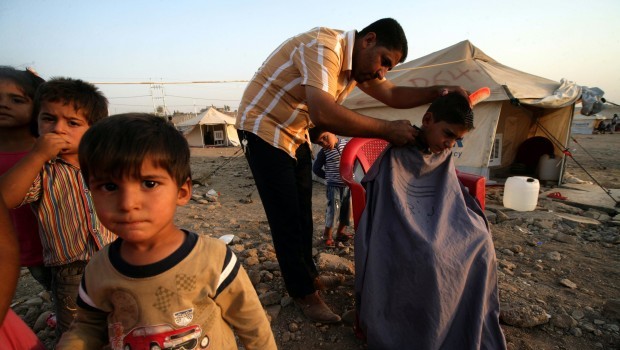Today, another Syrian child has crossed the border, fleeing the horrors of a war now into its third destructive year.
And at that moment, we passed a new milestone of global shame. This was the one millionth child forced from Syria since the horrors began.
Imagine that child. Forced from a community under gunfire. Walking, often for several days, in search of safety. Then, in exile, forced to live in a tent, shack or an abandoned shop with their family—if they still have one. Reliant on the support of international aid agencies to survive. Haunted by the memories of this terrible conflict, vulnerable to exploitation, scarred by the trauma of a childhood which has witnessed things no child should see.
Those scars appear as loss of speech, broken sleep, and challenging behavior. Financial pressures may lead parents to send this child to work rather than to school or, if she is a girl, to marry her off at a tender age. This child may be all alone, separated from the rest of the family during flight. Or perhaps he or she is suddenly the head of the household, charged with the care of younger siblings.
Now imagine that child’s future, and the future of all those innocent children caught in the midst of the terror. Robbed of schooling—indeed, in many ways, robbed of their childhood—how will they recover, and some day even thrive, supporting their families, and contributing to society?
Many are becoming angry at their plight. This is sad for them—and dangerous for the region, because these are children and young people, whose anger and frustration will all too likely replicate the divisions and hatreds of today in the next generation.
That is one reason why, earlier this year, UNHCR and UNICEF warned that a whole generation was at risk in Syria. We repeat that warning today.
More than half of the refugees fleeing Syria are children. We are doing all we can to help each and every one of them, their families, and the communities that host them. We also work to bring aid to the three million vulnerable children who are at particular risk inside Syria. Along with partners in non-governmental organizations and civil society groups, we continue to work to meet urgent needs in the refugee camps and to assist generous host families in neighboring countries.
This year alone, inside and outside Syria, more than 10 million people have been provided with drinking water. Some 2 million children have been immunized against killer diseases. More than 250,000 children have been helped to access some form of education. Nearly 170,000 have received psychosocial assistance. We have registered thousands of children, giving them an identity, and helped the babies born in exile get birth certificates, preventing them from becoming stateless. Whether in camps, villages or cities, most live in a basic, but safe, shelter.
But the needs are growing faster than our capacity to respond to the plight of all these children. The Syria Regional Refugee Response plan is, to date, less than 40 percent funded.
Syrian children need action by those who can enable humanitarian agencies inside Syria to safely and immediately reach those worst affected. They also need action by donors—traditional and new—who, in addition to their existing generosity, will be called upon to do even more, so humanitarian organizations can alleviate suffering. But more than anything, these children deserve action by those who have the power to bring an immediate end to this conflict and the suffering it has caused.
One million children. One million.
Surely, those involved in the fighting, and all those with the influence to stop it, can agree that one million refugee children is one million too many. They have the means, and therefore a particular responsibility, to put an end to this horror.
